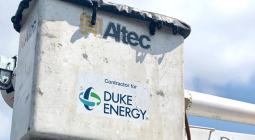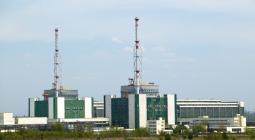UK government sets out plans for ‘biggest nuclear power expansion in 70 years’
Ministers hope to build fleet of reactors to meet quarter of electricity demand by 2050 but critics highlight long delays and rising costs
The government has set out plans for what it claims will be Britain’s biggest nuclear power expansion in 70 years, despite concerns about faltering nuclear output and project delays.
Ministers published a roadmap on Friday that recommits the government to building a fleet of nuclear reactors capable of producing 24GW by 2050 – enough to meet a quarter of the national electricity demand.
Approval will be given for one or two new reactors every five years from 2030 to 2044, and backing given to another large-scale reactor in addition to Hinkley Point C and the planned Sizewell C , even as the projects face uncertainty over their costs and timescale.
The roadmap echoes plans put forward by the then prime minister, Boris Johnson, in 2022 to “build a new [reactor] every year” to wean Britain off fossil fuel.
Since then the developer of Hinkley Point C, the French utility EDF, has said the cost of Britain’s first new nuclear plant in a generation had spiralled to £33bn, a 30% increase from 2015 when it forecast the cost at between £25bn to 26bn. There are also concerns that Hinkley’s start date may be delayed from the summer of 2027 to the early 2030s.
Sunak said the government’s latest support for the nuclear industry was “the next step in our commitment to nuclear power, which puts us on course to achieve net zero by 2050 in a measured and sustainable way”.
“Nuclear is the perfect antidote to the energy challenges facing Britain – it’s green, cheaper in the long term and will ensure the UK’s energy security for the long term,” he said. “This will ensure our future energy security and create the jobs and skills we need to level up the country and grow our economy.”
EDF said in January it would delay the shutdown of four of its UK nuclear reactors for at least two years to help plug the looming gap in the UK’s nuclear supplies towards the end of the decade.
Britain’s nuclear power output fell to its lowest level in more than 40 years in 2023 after three reactors closed in the previous two years and statutory maintenance forced temporary shutdowns at four reactors. EDF said its nuclear output in the UK had fallen from a high point of 65 terawatt hours in 2016, from eight nuclear plants, to less than 40TWh in 2023.
The company is pinning its hopes for its future nuclear generation on the delayed Hinkley Point C project and its planned successor project at Sizewell C in Suffolk, which has been planned for the past 12 years but has yet to receive a final investment decision.
Jess Ralston, an analyst at the Energy and Climate Intelligence Unit (ECIU), said the government’s multimillion-pound investment of public money in the nuclear industry should “hopefully unleash further private sector investment”.
“The challenge is the industry has a record of running overbudget and behind schedule, so this does little to increase the UK’s energy security any time soon,” Ralston said.
Doug Parr, Greenpeace UK’s chief scientist, said: “Every few months the government makes a grandiose public announcement about future nuclear in the hope that a big investor will believe the hype and step up to fund this 20th-century technology, but it isn’t working.
“The energy industry knows that the economic case for slow, expensive nuclear just doesn’t add up, and the future is renewable,” Parr added.
“This vague, aspirational announcement with its unevidenced claims of cheap energy is unlikely to change their minds when there are real reactors overshooting their massive construction budgets and showing them the truth.”
Cover photo: Hinkley Point C faces uncertainty after it was delayed owing to its cost and timescale. Photograph: Finnbarr Webster/Getty Images





